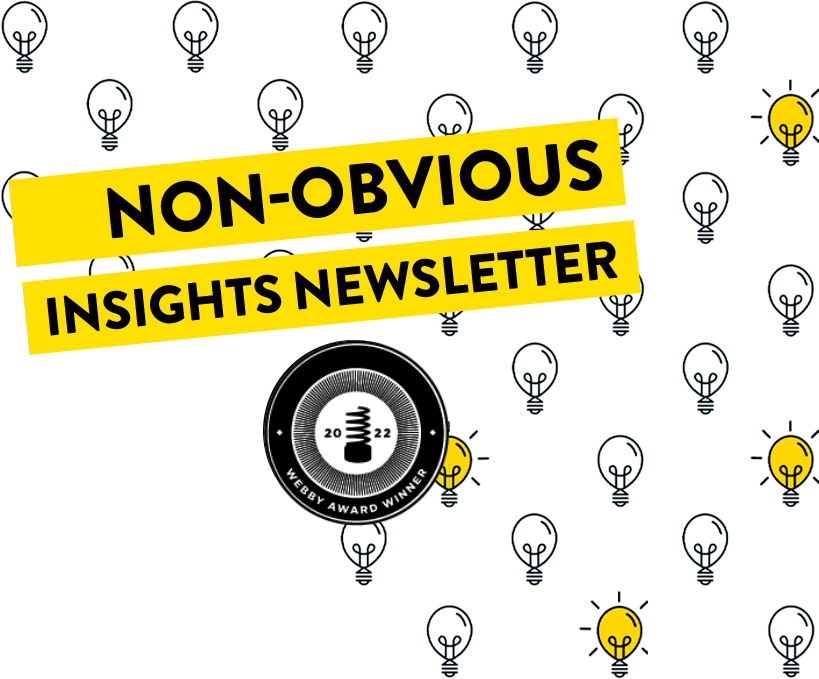Along with national pride, in this week’s newsletter you’ll read about Mattel’s ambitious efforts to license their toy library for film, why people might turn AI into a religion, what we can learn from the catastrophic (and predictable) failure of the metaverse and the real cost (in dollars) of an actual human head. A little bit of everything this week!
Extreme Pride in Being American Remains Near Record Low
A new Gallup poll released just in time for the 4th of July leads with the eye-catching headline that extreme pride in being American is at a record low. As often is the case with sensational headline summaries like this, the true insight of the poll is buried further in the results. First of all, while Americans who report “extreme” pride is at a historic low, when combined with those who are “very proud” the number goes up to 67% of surveyed Americans.
More interesting, though, is how age factors into the answers. “Whereas 50% of U.S. adults aged 55 and older say they are extremely proud to be American, 40% of those aged 35 to 54 and 18% of 18- to 34-year-olds say the same.” For 18-34 year olds, even when combined with those who said they are “very proud” the number is far less then half. And these numbers don’t even include teens aged 13 to 17 who are old enough to have a thoughtful perspective on the question but not reflected in this or most other opinion polls.
Given the recent wave of conservative Supreme Court rulings and the tendency of young people be more liberal than their elders, the generational trend is one that should concern older Americans. What happens when a disempowered generation low on national pride finally takes over?
How Barbie May Start a New Era of Resurgent Toys From Mattel
Mattel may have the right playbook to become the next Marvel. That’s the underlying takeaway from this New Yorker article about the early efforts of the Mattel Films division of the renowned toymaker whose flagship Barbie brand is featured in what will likely be one of the biggest blockbuster movie releases of the year. For a brand steeped in decades of intellectual property, the first task from Miramax veteran Hollywood Exec Robbie Brenner was to bring together a team to “rummage through Mattel’s toy chest and identify I.P. that could be fodder for Hollywood studios.”
Then the team from Mattel would “help match properties with writers, actors, and directors; studios would provide all the funding. The brands, and audiences’ familiarity with them, were their own form of currency.” The potential for all of this effort to turn into an entertainment juggernaut is staggering. The division has already publicly announced 13 more films and has 45 total in development. This means Hot Wheels, Fisher Price, UNO, He-Man and many more recognizable brands will have films on the way — and Mattel will cashing the licensing fee and royalty checks.
Will Humans Inevitably Turn Faith In AI Into a Religion?
Imagine a future where AI was all-knowing and all-understanding. These are abilities humans have typically ascribed to Gods worthy of worship. Soon, they may also be among the feature set of artificial intelligence. An article in The Walrus takes this possible future to it’s extreme – asking whether there may come a time when AI itself is worshipped as a religion. The question may not be as unnecessary as we wish it were:
“The massive decline in traditional religious adherence, combined with a craving for some kind of faith, has led many to embrace alien life, new-age offerings, and dangerous cults … AI could create figures capable of injecting emotion, inflection, and sincerity into a homily and have quick access to the contents of every religious commentary there is. It could also find jokes and witticisms and be able to make it all seem bitingly relevant through its knowledge of current events.”
Having faith in a higher power can feed the soul, yet throughout history it has also enabled false prophets to take that faith and twist it in order to benefit themselves. Could this happen with AI too? Early experiments blending AI with religion often promise automated spiritual guidance from scriptures, like the “Robot Spirit Guide.” Right now, these tools are formulaic, predictable and cannot compare to the spiritual, communal and emotional rewards of organized religion … but one day that may no longer be true and the ideas of AI-powered religion may not seem so far fetched.
Lessons From the Catastrophic Failure of the Metaverse
The metaverse is the ultimate example of what architecture critic Kate Wagner describes as yet another overhyped innovation from “the increasingly desperate and failure-prone tech industry.” In an article about the demise of the metaverse, she writes “to say that the Metaverse is dead is an understatement. It was never alive.”
This was perhaps the most visible sign of what Wagner describes as the “eagerness to latch onto whatever the newest trend the increasingly desperate and failure-prone tech industry dished out.” Yet now that we can look back, the failure of the metaverse to generate millions of users or to change our habits when it comes to consuming information was largely predictable. And by extension, the money that brands threw at creating ghostyard virtual showrooms seems like an obvious waste now.
Ending Image Poverty With Tactile Graphic Design
The latest issue of the MIT Technology Review is dedicated to how technology can help make a more accessible future for people with all types of disabilities. One article introduces the idea of “image poverty” – a term used to describe how the world is often created with the assumption of sight:
“We refer to the visual arts, visual aids, and data visualizations; we conflate the world of images with the sense of vision as a means of perception.”
The solution is to integrate more tactile graphic design into the way that information is presented. So, for example, when maps or other visuals are created with a tactile option, they can be utilized by people who are visually impaired. A device that is being tested now called the Monarch (pictured above) even allows a refreshable display that could create tactile graphic design in real time based on automatically rendering digital images. The underlying message behind this is one we need to see more often in technology: that real innovation must also ensure no one is left behind.
Even More Non-Obvious Stories …
Every week I always curate more stories than I’m able to explore in detail. Instead of skipping those stories, I started to share them in this section so you can skim the headlines and click on any that spark your interest:
- A New Explanation for One of Ecology’s Most Debated Ideas
- National Geographic Lays Off Its Last Remaining Staff Writers
- How Much Is A Human Head?
- Pig Protein-Infused Beans Trot Forward To Serve As A Pork Alternative
- Twitter Didn’t Just Block Unregistered Users, It Blocked Google Search
- This Environmentally Conscious Smartphone Is Finally Coming to the US
How are these stories curated?
Every week I spend hours going through hundreds of stories in order to curate this email. Looking for a speaker inspire your team to become non-obvious thinkers through a keynote or workshop? Watch my new 2023 speaking reel on YouTube >>





